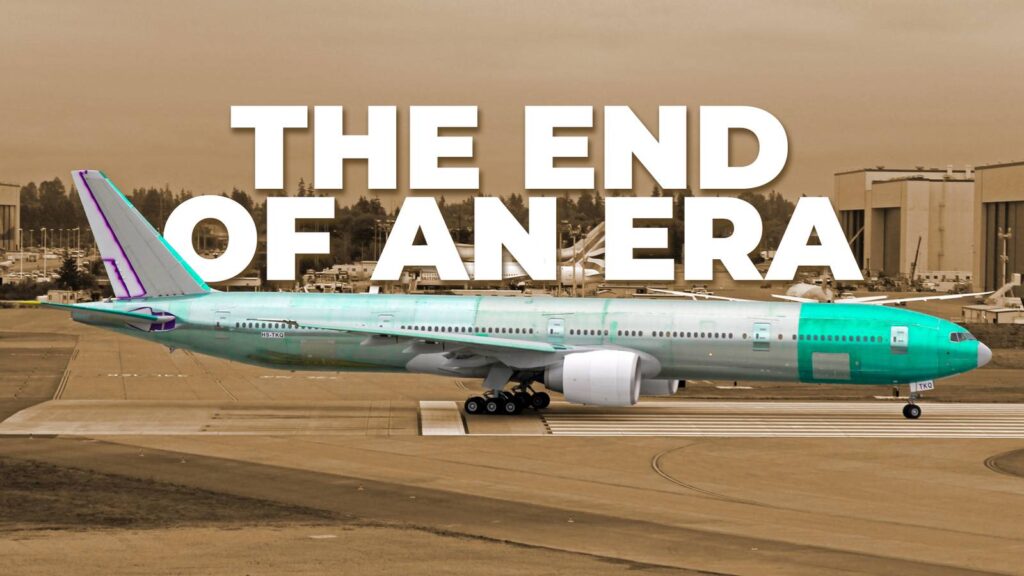
In 2004, the aviation industry witnessed a transformative moment with the introduction of the Boeing 777-300ER, a variant that set new standards for commercial passenger aircraft. First flown by Air France, Boeing touted it as “the most technologically advanced airplane in the industry,” surpassing its predecessors, the 777-200 and 777-200ER, in comfort and range. The 777-300ER was equipped with the powerful General Electric GE90-115B turbofan, making it an instant favorite for long-haul routes due to its extended range and fuel efficiency.
The aircraft’s popularity soared as airlines worldwide, including China Eastern Airlines, incorporated it into their fleets. China Eastern plans to use the 777-300ER to launch the world’s longest direct flight. As Boeing transitions to the 777X, the final 777-300ER rolled off the production line, marking the end of an era.
777-300ER Production and Popularity
According to Aerospace Global News, only one Boeing 777-300ER was produced in 2024, delivered to Altavair LP in December. Altavair, an aircraft finance and leasing company, has been a significant player in the commercial aircraft lease market, completing over $12 billion in transactions since its inception in 2003.
The production of the final 777-300ER concludes a nearly two-decade run of the world’s best-selling widebody aircraft. Boeing delivered 833 units of the -300ER, a substantial portion of the 1,767 total 777 family deliveries. This variant became the most popular of the 777 series, cementing its place in aviation history.
Boeing gradually reduced 777-300ER production to focus on the 777X. The last -300ER before Altavair’s was delivered in 2022 to Thai Airways. Altavair’s 2024 -300ER, initially ordered by China Southern Airlines, was stored for nearly five years due to COVID-related delays. Eventually, it was leased to Ethiopian Airlines, still bearing China Southern livery.
A Tale of Two Engines
The 777-300ER’s introduction in 2004 was revolutionary, boasting a range of 7,370 nautical miles. This was largely due to the twin-engined design and the GE90 high-bypass turbofan engines, the world’s most powerful at the time, producing 115,300 pounds of force. These engines were later used in other variants, such as the 777-200LR and the 777F freighter.
The GE90’s power was eventually surpassed by the GE9X in 2019, which will power the upcoming 777X. The GE9X produces 134,300 pounds of force and incorporates advanced materials for improved efficiency, setting a new benchmark for commercial jet engines.
What Made the 777-300ER So Popular with Airlines?
The 777-300ER’s appeal to airlines extended beyond its powerful engines. It offered high passenger capacity, fuel efficiency, and long-range capabilities. These attributes made it a staple for major carriers like Emirates and Qatar Airways, which operate hub-and-spoke models where such aircraft are invaluable.
The transition to the 777X has been anticipated, with airlines like Emirates and Qatar Airways placing significant orders. However, the 777X program has faced delays due to technical challenges and regulatory scrutiny. The decision to halt 777-300ER production was inevitable but may have been expedited to focus resources on the 777X.
Boeing’s Challenges and a Record-Breaking Route
Boeing’s widebody production faced additional hurdles with a machinist strike in 2024, affecting production schedules and potentially costing billions. The strike ended in November, and production resumed in December, coinciding with the final 777-300ER delivery.
Despite these challenges, the 777-300ER will soon set another record. China Eastern Airlines plans to operate a 10,600 nautical mile flight from Shanghai to Buenos Aires, with a stopover in Auckland. This 25-hour journey, extended by headwinds on the return, will become the longest direct commercial flight globally.
Although production has ceased, the 777-300ER will remain a fixture in aviation for years, particularly for long-haul routes. The aircraft’s design and capabilities ensure its continued relevance, with many units still in service worldwide.
The 777-300ER’s legacy is secured, with airlines like Emirates continuing to operate large fleets. As passenger demand grows, the aircraft’s role in meeting travel needs remains crucial, ensuring its presence in the skies for decades.






